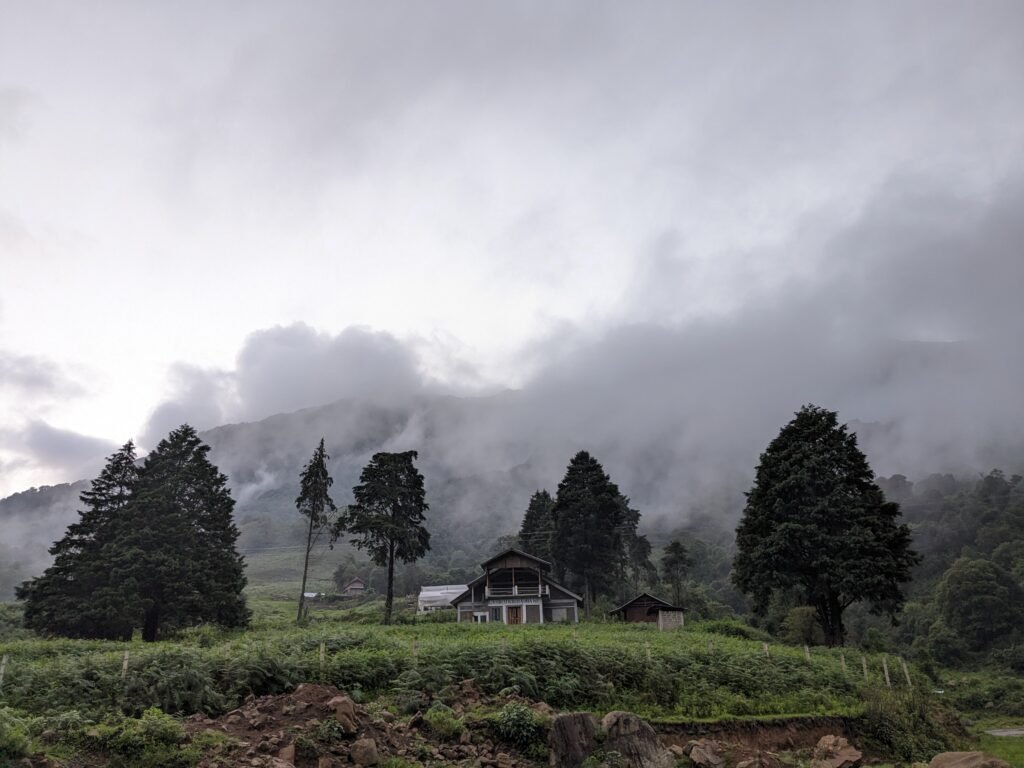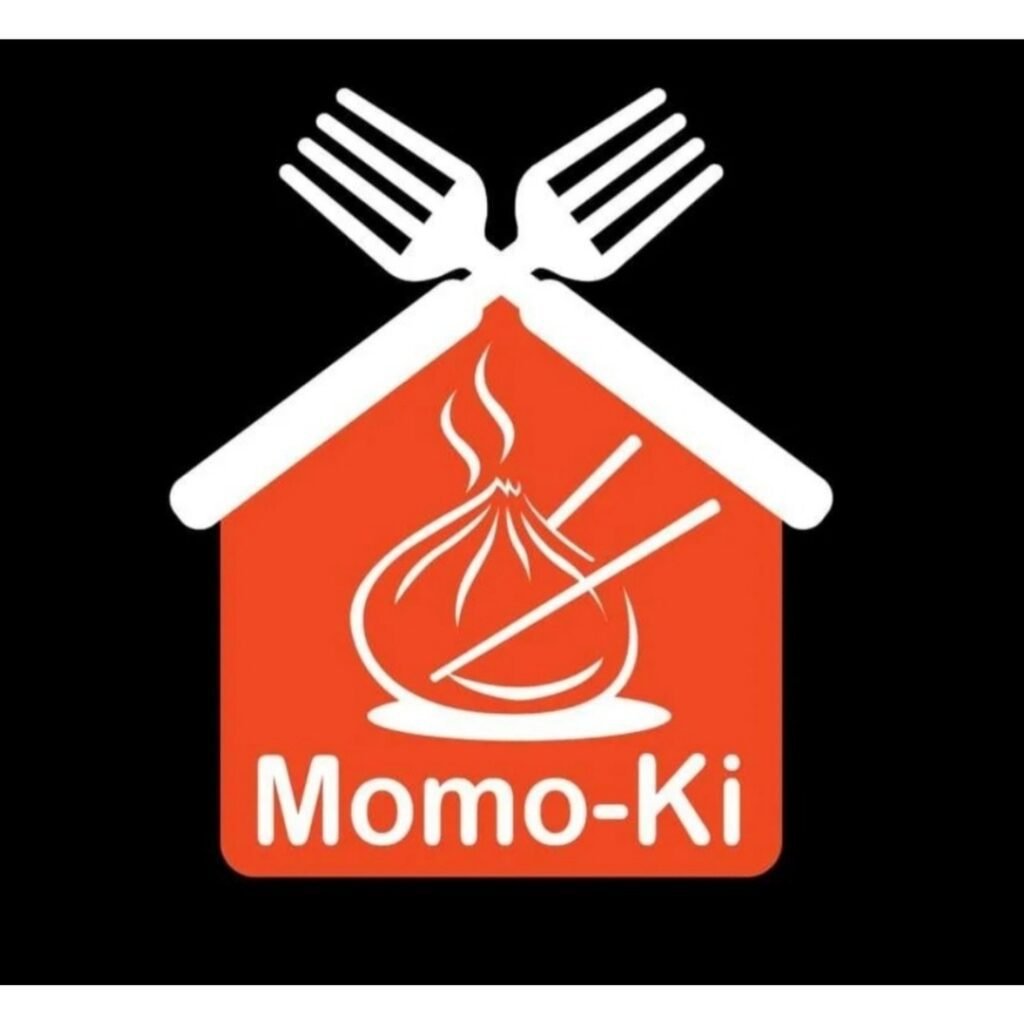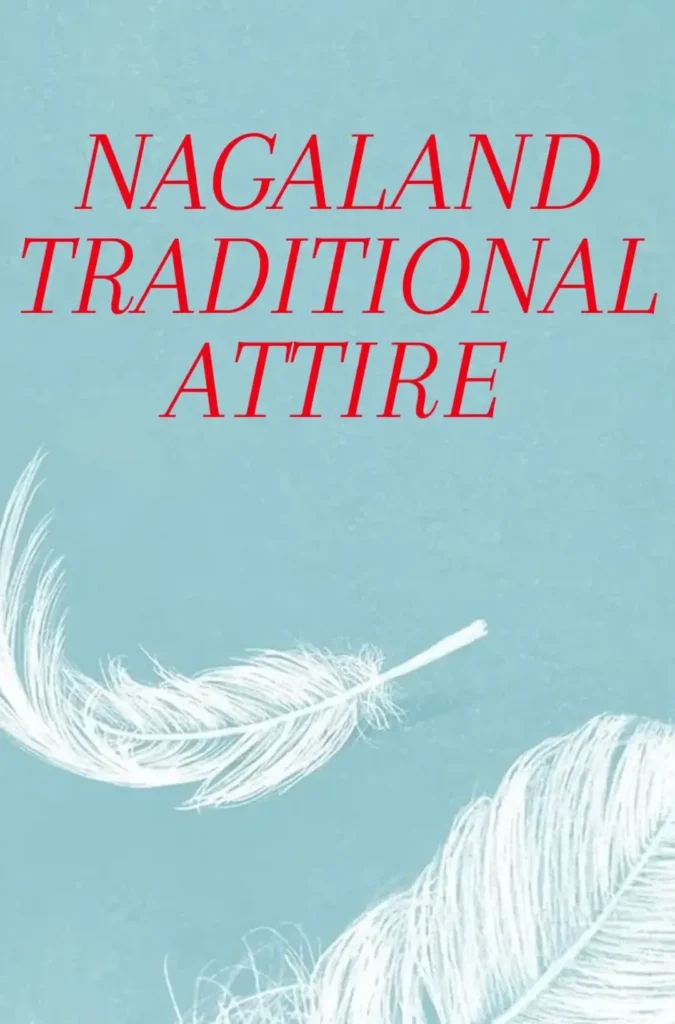Moatsu Festival— Celebrating the Vibrant Naga Culture in Nagaland
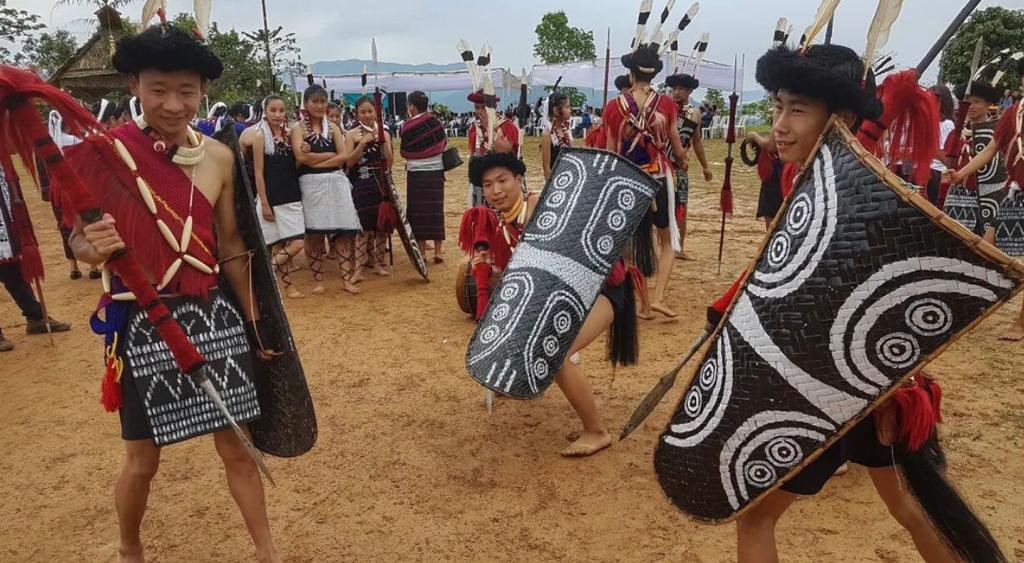
Nagaland is a land of diverse tribes, each with its unique customs, traditions, and festivals. Among these festivals, Moatsu holds a special place in the hearts of the Ao Naga tribe. Moatsu is a festival celebrated annually in the first week of May. It is a celebration that exudes joy, unity, and reverence for nature. It is celebrated to mark the end of the sowing season and the onset of a new agricultural cycle. The festival derives its name from the Ao Naga words “Mo” (meaning “first”) and “Atsu” (meaning “taste”), signifying the first taste of the new harvest. It is a time for the Ao Naga community to express gratitude to the Almighty, seeking blessings for a bountiful harvest and prosperity in the coming year.
The Moatsu festival is one of the most significant agricultural festivals celebrated by the Ao Naga tribe in Nagaland, India. It typically takes place in the first week of May every year and marks the end of the sowing season and the beginning of a new agricultural cycle. The festival is a time of thanksgiving to the deity of prosperity, Lijaba, for a bountiful harvest and seeks blessings for a productive year ahead.
The Essence of Moatsu Festival
The essence of the Moatsu festival lies in its cultural and social significance, bringing together the community in a spirit of unity, joy, and camaraderie. The festival celebrates the successful completion of the sowing season and the commencement of the harvest season. It is a time for the farmers to rejoice and express gratitude for the abundance of crops and blessings from the gods and spirits. During the Moatsu festival, various traditional rituals and ceremonies are performed. These include invoking the blessings of the ancestors and the deity Lijaba for prosperity, well-being, and protection from calamities in the coming year. People dress in traditional Ao Naga attire, adorned with unique and vibrant accessories, making the festival a visually colourful and culturally rich affair. Traditional Naga folk dances and music are integral to the celebrations. The community comes together to perform these dances, depicting stories from their history and mythology. Drum beats and songs fill the air with festivity and energy. The Moatsu festival is a time for lavish feasting and sharing of food with family, friends, and neighbours. The sense of community bonding and togetherness is strengthened during this period.
Apart from cultural activities, the festival includes various sporting events and traditional games like archery, wrestling, tug of war, and more, adding an element of excitement and fun. Also, the Moatsu festival plays a crucial role in preserving and passing on the cultural heritage of the Ao Naga tribe to the younger generations. It fosters a sense of pride in their roots and identity. Gradually, it has gained attention beyond the local community and often attracts tourists from different parts of India and the world. It offers a unique opportunity for visitors to witness the vibrant Naga culture, traditions, and rituals up close.
Overall, the essence of the Moatsu festival lies in its celebration of nature, community, and cultural heritage. It serves as a reminder of the deep-rooted agricultural and spiritual connection that the Ao Naga people have with their land and the environment.
Preparations and Rituals
The preparations for Moatsu begin with every household eagerly preparing to welcome the festival. The celebrations occur in the local Morung, a traditional communal house, where young boys are taught the values and customs of their ancestors. On the festival’s first day, a significant ritual known as “Khutimi” is performed. During this ritual, houses and surroundings are thoroughly cleaned and decorated with various colourful patterns and motifs. The cleaning process symbolises purification and renewal. Villagers collect firewood, as it is an essential part of the festival. The firewood is used for the bonfire, which is a significant element during the celebrations. People wear traditional Ao Naga attire, including ornate and colourful clothing, beads, and jewellery. This adds to the vibrancy and cultural significance of the festivities. Special dishes and delicacies are prepared for the occasion. Rice beer, also known as Zutho, is a popular beverage served during the festival.
The Moatsu Festival Extravaganza
Feasting and Folk Dances
Central to the Moatsu festivities is the grand feast where the community comes together to enjoy traditional dishes. An array of delectable Naga cuisines, such as smoked pork, bamboo shoots, fermented soybeans, and rice beer, are served. The atmosphere echoes with laughter, songs, and the rhythmic beats of indigenous musical instruments.
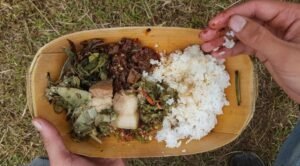
One of the highlights of the Moatsu festival is the mesmerising folk dances. Colourful traditional attire and intricate headgears adorn the dancers performing the “Sangpangtu” and “Hega” dances. These dances narrate stories of courage, love, and camaraderie, showcasing the rich oral history and culture of the Ao Naga tribe.
Traditional Games and Sports
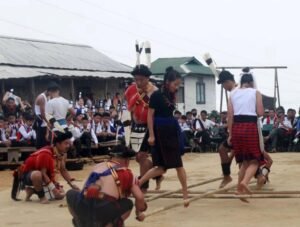 During Moatsu, villagers engage in various traditional games and sports, fostering a spirit of healthy competition and camaraderie. Archery competitions, wrestling bouts, and indigenous games like “Stone Pulling” and “Fire Making” add excitement and enthusiasm to the festival.
During Moatsu, villagers engage in various traditional games and sports, fostering a spirit of healthy competition and camaraderie. Archery competitions, wrestling bouts, and indigenous games like “Stone Pulling” and “Fire Making” add excitement and enthusiasm to the festival.
Bonfire and Music
As dusk descends, the celebratory spirit continues with a mesmerising bonfire lighting ceremony. Villagers gather around the bonfire to sing traditional songs and perform folk dances. The warmth of the bonfire creates an ambience of togetherness, allowing people to bond over storytelling and traditional music.
The Cultural Significance
Beyond its joyous celebrations, the Moatsu festival holds deep cultural significance for the Ao Naga community. It reinforces their sense of identity, heritage, and unity. The festival instils a profound respect for nature, as the community acknowledges their dependence on the land’s fertility and the bounty it provides. Through the storytelling and performances during Moatsu, the younger generations learn about their tribe’s history, legends, and morals. The passing down of these oral traditions ensures the preservation of the Ao Naga culture and its values.
Agricultural Celebration
Moatsu is primarily an agricultural festival celebrated to mark the completion of the sowing season and the beginning of a new agricultural cycle. It is a time for farmers to express their gratitude to the gods and spirits of nature for a bountiful harvest and to seek blessings for the upcoming season.
Strengthening Community Bonds
The festival brings together the Ao Naga community, fostering a sense of unity and togetherness. People participate in various communal activities, including feasting, dancing, and singing, which help reinforce social bonds and create a sense of belonging.
Ancestral Reverence
Moatsu is an occasion for paying homage to the ancestors and seeking their blessings for prosperity and well-being. Traditional rituals are performed to honour the departed souls and to seek their protection for the community.
Rituals and Ceremonies
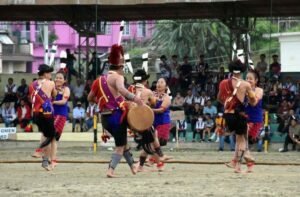
During Moatsu, people perform various rituals and ceremonies to invoke the deities and spirits. The festival is characterised by symbolic practices such as cleansing wells and water sources, lighting ceremonial fires, and offering prayers to the gods of nature for a fruitful year ahead.
Cultural Preservation
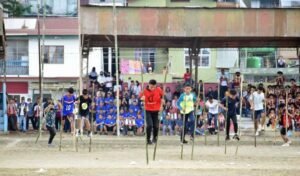
The celebration of Moatsu helps preserve and pass on the Ao Naga cultural heritage to the younger generations. Through rituals, storytelling, and traditional performances, the community reinforces its unique identity and ensures the continuity of its customs and traditions.
Cultural Extravaganza
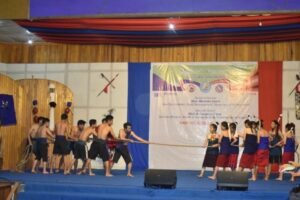
Moatsu is a vibrant and colourful festival that showcases the rich cultural heritage of the Ao Naga tribe. Traditional attires, ornaments, and cultural performances add to the festive spirit and allow visitors to experience the unique Naga culture.
Tourism and Economy
The festival has also gained importance in the context of tourism. As more people show interest in experiencing different cultures, events like Moatsu attract tourists from different parts of India and the world. This influx of visitors can have a positive impact on the local economy.
Moatsu Festival Today
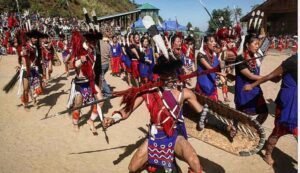
Nagaland has recently undergone modernisation; therefore, the Moatsu festival has adapted to changing times. While the core rituals and traditions remain intact, the festival now includes events like traditional fashion shows and cultural exhibitions. This blend of the traditional and the contemporary highlights the evolving cultural landscape of the region. The Moatsu festival is still a vibrant testament to the age-old traditions and cultural richness of the Ao Naga tribe in Nagaland. As the community gathers to celebrate unity, nature, and the cycle of life, they pay homage to their ancestors and the legacy they have inherited. In the midst of dancing, feasting, and storytelling, the Moatsu festival carries forward the timeless heritage of the Ao Naga tribe. It ensures that their customs and identity endure for generations to come.
Lorem ipsum dolor sit amet, consectetur adipiscing elit. Ut elit tellus, luctus nec ullamcorper mattis, pulvinar dapibus leo.
